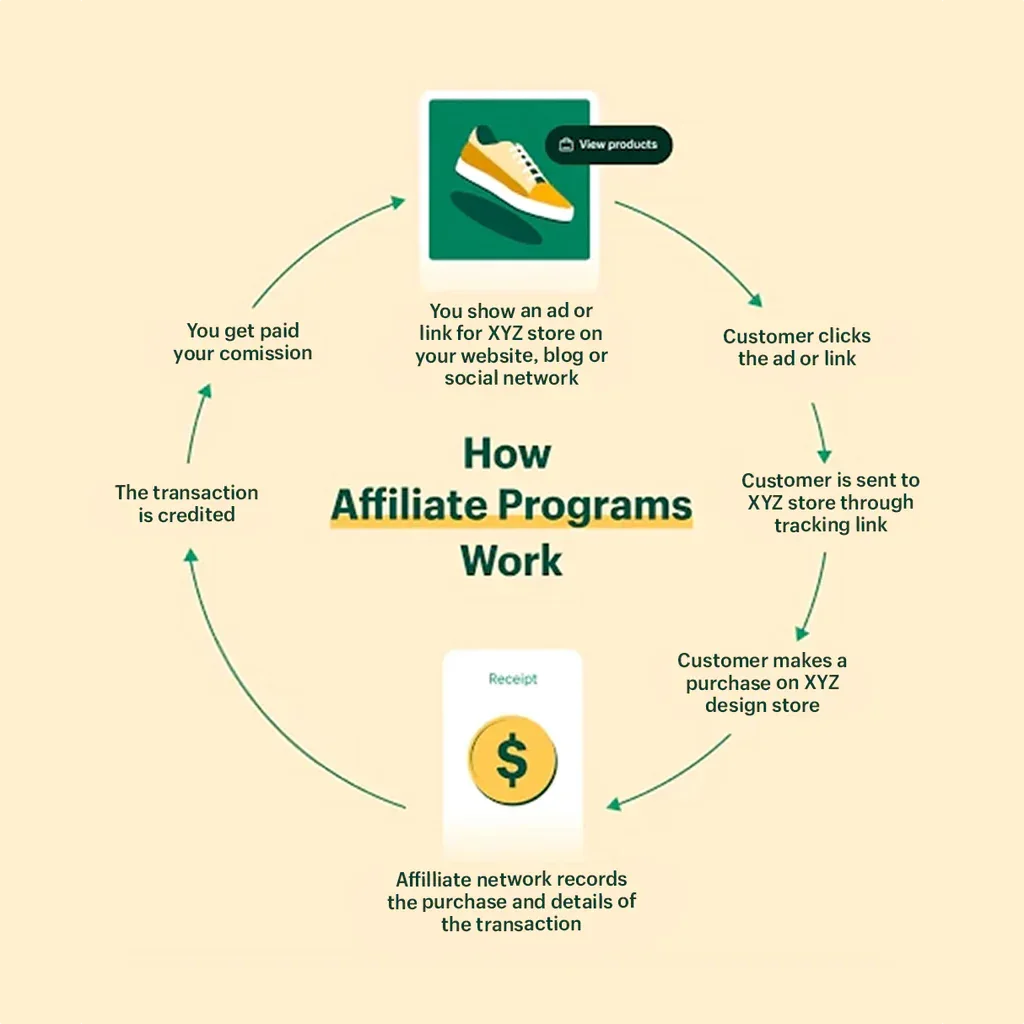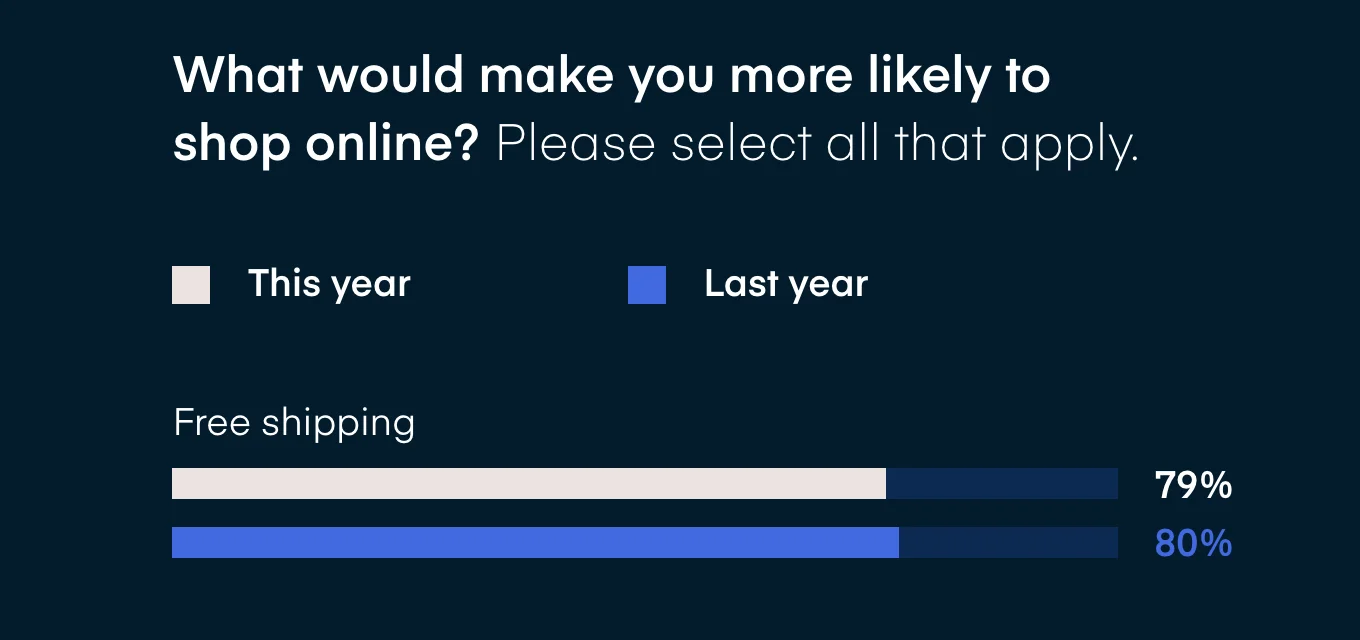How To Create a Successful Affiliate Program in 5 Steps?
Summer Nguyen | 03-17-2025

Affiliate marketing has become a hot trend in recent years thanks to the growing demand for MMO (Make Money Online), especially after the COVID-19 crisis. The global market is projected to exceed $36.9 billion by 2030, with an annual rate of 7.7% between 2022 and 2030. However, do you fully understand how it works? How can you create an affiliate program and leverage it effectively to acquire customers and boost sales?
This guide for beginners outlines the best strategies for starting any given affiliate marketing program, from product selection to commission rates and affiliate recruitment.
Overview of an Affiliate Marketing Program
What is an affiliate marketing program?
An affiliate marketing program is an effective marketing method that gets all partners, content creators, or influencers to promote your products and pays them by commission.
How does it work?

When an affiliate successfully refers customers from his store within the guidelines provided by this program, he/she will earn some fraction from every sale in general.
In fact, for example, Target gives its affiliates the chance to earn up to eight percent on each qualifying purchase made via the affiliate link. Some other programs also exist that simply offer fixed payout amounts.
Affiliates are usually cheaper for advertisers than traditional media like TV because they only pay when there are real sales but not beforehand, no matter what happens.
For bloggers, influencers, and review sites, this is how to make money through affiliate programs, creating a win-win for all involved.
Is Affiliate Marketing Right for Your Business?
Regardless of whether you sell products that are physical or digital (like SaaS), performance marketing can help increase your traffic and promote your business. To find out whether it suits you, ask yourself these questions:
What kind of business do you operate?
Usually, affiliate programs perform best on eCommerce, subscription services, and online businesses. For instance, Amazon Associates is among the popular affiliate programs. Some industries reaping from have been mentioned below:
- eCommerce
- Beauty and health
- Fashion
- Subscription services
- Technology
For subscription-based companies, it is possible to recover their commission expenses via customer renewals. You choose if an affiliate will be rewarded for every renewal.
For small or niche businesses, affiliate marketing must be evaluated with due diligence because identifying appropriate partners in specialized markets may prove difficult.
Can your business handle affiliate marketing?
Although performance marketing is bound to raise your income, it also raises pressure on your enterprise. Hence, you have to:
- Handle heightened demand for goods/services, which may necessitate expansion and adequate staffing.
- Provide customer support to new leads to guide them through the sales funnel thereby ensuring good customer service.
- Payout commissions (or other rewards like store credits) during sales to affiliates.
- Manage customer acquisition costs (CACs) while offering commissions that are appealing enough to lure quality affiliates.
- Train and support affiliates on program terms, commission problems, and marketing tools.
5 Steps to Launch an Affiliate Program Effectively
To initiate an affiliate program, one has to understand the products they will be selling, who their target audience will be, and how to create a working program for both their business and affiliates.
1. Select the appropriate products and offers
If you choose higher average order value (AOV) products, the affiliates will earn more, thus enticing them to join your program. An example is that a 10% commission on an $80 product is better than on a $5 product.
Direct affiliate marketers on what products to market and also come up with additional incentives like:
- Free shipping for orders above $50: about 80% of shoppers admit that free shipping motivates them to spend more.

-
Discount for first-time buyers: Offer special discounts for new customers who make their first purchase and then follow it up with email or Facebook ads afterward.
-
Buy More Save More (BMSM) discounts: When a customer spends $50, he/she may receive a 20% discount, while a single purchase of up to $100 earns 25% off.
Customized promotions increase traffic through affiliates, thus increasing sales. If this approach does not work, you may have to alter either the product or your message.
2. Set your affiliate pricing and commissions
Next, one must determine a system of compensation for commission once affiliate programs begin their operations with the selection of products meant for promotion. As much as certain brands may give out samples or store credits, cash rewards are more enticing, particularly when dealing with advanced affiliates.
The following are two standard alternatives available while setting up commission rates:
- Percentage commissions: A percentage of each sale made by the affiliate.
- Flat-rate commissions: A fixed amount that is awarded per every sale.
In this section, we will discuss some of the most common categories of goods and their corresponding normal rates for affiliate commissions:
| Product Type | Commission rates |
|---|---|
| Beauty | 15% |
| Clothing | 10-15% |
| Food and Drinks | 10-20% |
| Health | 20-30% |
| Pets | 10-20% |
| Computers and Tech | 15-20% |
Choose each category as your starting point, and you can adjust them later if necessary. You can also simply mix these types of commissions to come up with different offers.
3. Adopt an affiliate management tool
As your affiliate network grows, using an affiliate platform can simplify expanding your program. When selecting a platform, seek one that has easy connections with partners and reduces the complexities of making payments. It should also aid in managing:
- The offers
- Campaign analytics that enables proper tracking and reporting
- Ads campaigns that are optimized
- Commissions of partners
The platform ought to have a friendly interface, necessary tools or plugins, up-to-date fraud detection systems, and dependable support.
4. Find and recruit affiliates
You might think that you can only get affiliates from big networks but as a small business, you can get affiliates on your own, too. Here are some of the things you should look out for when looking for your potential affiliates:
- Strong platform with good content: This signifies that they are serious about their business.
- Selectivity in promotion of products: This gives them authority in the eyes of their clients on his/her program.
- Marketing knowledge: SEO skills enable them to advertise your products better.
- Well-established sales funnels: those who are already working with another brand often provide important skills and experience.
- Shared niche or complementary products: The audience they have in mind could be interested in what you have to offer.
After getting these considerations in mind, it is time to start reaching out to possible partners who will help you sell more products.

There are multiple ways to find affiliates for your brand:
- Work with an agency
- Connect through affiliate networks and social media
- Partner with influencers
- Meet at marketing events
- Leverage existing customers
- Create an affiliate landing page
- Ask current partners for referrals
- Contact affiliates directly with personalized offers
5. Manage your affiliates
It is essential to keep track of the performance of the affiliates and have a means of communicating with them regularly to build strong relations between the two parties.
Let your affiliates understand your program rules and the brand. Ensure that you provide them with a content library that contains tutorials, webinars, graphics, pre-written social posts, templates and approved hashtags to help them remain focused on your objectives.
To evaluate how successful your program is, you need to identify the top-performing affiliates first. If they were once loyal customers, use this information to attract even more customers. There are several key metrics to monitor which include:
- Total affiliate sales
- Sales per affiliate
- Average order size (in comparison with non-affiliate sales)
- Total payout
- Payout-to-sales ratios
- Gross margin
- Total number of affiliates
- New affiliates
- Affiliates that have left the program
Best Practices of Affiliate Marketing
In case you want to establish a profitable affiliate marketing program, observing the best practices is necessary. Below are some optimization tips:
Train and assist your affiliate team
After recruiting the affiliates, you will need to take good care of them. Begin by explaining to them the terms and conditions of the program, and make them aware of what they are getting into by having them sign a confirmation of understanding agreement.
Teach them about your brand on basic levels and how it works in addition to providing them with available affiliate links and marketing materials. Apart from that; an affiliate manager should check on them regularly to keep themselves posted.
Monitor and assess your performance
Performance tracking is important; this can be done using your software for tracking affiliates or using the networking site for affiliates as compatible with your branding plans.
Tracking helps to know which ones are bringing the most customers while comparing previous figures regarding the performance of the program itself against desired goals. The key things metrics include income generated, rates of conversion, unique sales volumes along average order value (AOV). If we find ourselves falling behind our initial designs we could always reconsider commission rates or prices or even work with other collaborators.
Review your competitors’ affiliate programs
Running an analysis of competitors can assist you in evaluating the referral program that you have. Below are some of the aspects that you may consider:
- Commission structure: how do your competitors establish their affiliate commissions? Which actions cause payouts like leads or sales?
- Payment methods: how do they pay their affiliates? Is it per sale or a flat amount for specific actions, do they use credit cards or store credits?
- Affiliate recruitment: how do they find and recruit new partners? What are the terms and conditions of their programs?
Doing a SWOT analysis brings out the strengths, weaknesses, opportunities, and threats of each competitor’s program thereby revealing what areas could be improved upon or what risks may be posed to yours.

This way, one will be able to develop a good affiliate program, set the most appropriate commission structures, and select the best payment modes for its affiliates.
FAQs
1. How can I create an affiliate program?
To start an affiliate program, follow these steps:
-
Select products with a high average order value (AOV).
-
Set your affiliate pricing and commissions.
-
Choose an app to manage affiliates.
-
Recruit affiliates.
-
Oversee your affiliates.
2. What’s the difference between a referral and an affiliate?
Referral marketing rewards customers for bringing in friends or family. Affiliate marketing involves third-party partners who direct customers to your business for a commission.
3. What’s a good strategy for recruiting affiliates?
- Join an affiliate network.
- Promote your program on your website.
- Email your subscriber list.
- Share it on social media.
Conclusion
Partnership marketing programs can be more effective than relying solely on Facebook ads to drive traffic and increase online sales. If affiliate marketing is the right choice for your business, now is the time to take action.
Analyze your competition, plan your program and commission rates, and choose the right affiliate networks and software to achieve your goals.






